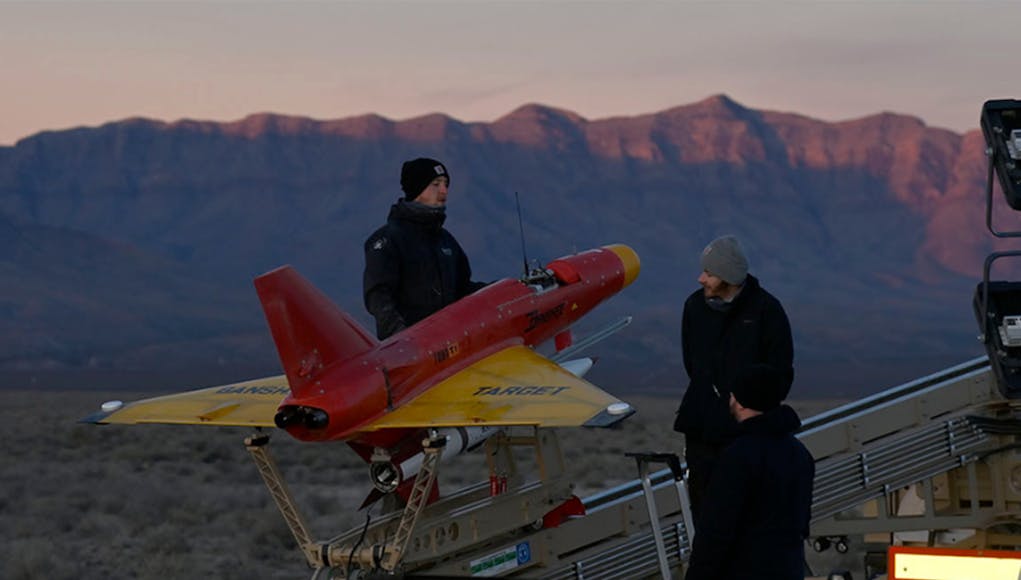QinetiQ, in partnership with the United States Department of Defense and White Sands Missile Range High Energy Laser Systems Test Facility (HELSTF), announces the successful flights of the first two Rattler Supersonic Target MkIs.
As part of the High Energy Laser Measurement (HELM) Rattler program and a QinetiQ funded Research and Development project, the flights provided the first data for this design variant of the uncrewed target.
Graham Ollis, Managing Director, Threat Representation, QinetiQ said in a news release:
“This flight represents an important milestone in the Rattler transition to service project, and demonstrates our supersonic target capability in action for our US customer, as part of the HELM Rattler program, to meet the requirement for evolving threats.”
Owen Price, Project Manager Target Systems, QinetiQ said:
“I am proud of the significant progress we’ve made with our development partners and customer in fielding this flight trial. We have been able to showcase QinetiQ’s technical and operational expertise and teamwork, launching the new Rattler ST MkI product and as part of developing the HELM Rattler test and evaluation target system for the war fighter, as requirements for more realistic, instrumented threat representation become ever more important.”
Emulating a variety of advanced missile threats, the firm say that “Rattler ST is a cost-effective supersonic target platform designed for threat replication, operational training and system evaluation”.
QinetiQ is customising the platform to support the US Department of Defense’s HELM Rattler Program, integrating a third-party target board to measure high-energy laser characteristics in flight, at supersonic speeds.
The $10 million (USD) program started in February 2022 and is due to conclude in mid-2024. For more information on the Rattler supersonic target, click here.














FYI, the Rattler supersonic target is the small rocket underneath the Banshee jet 80+ UAV in the above picture
Aah thx for the explanation I was wondering why it looked just like a Banshee, need to check out the full article.
Same.
Do wonder if they will ever fund Sea Ceptor trials against a supersonic Rattler target, understand the 2017 trials of Sea Ceptor with HMS Argyll on the Hebrides range used the subsonic Mirach drone (max Mach No 0.7).
Trials are expensive and not totally realistic as safety considerations call for 2 km safety zone around ship, so no head on attacks with the smallest target area and lowest RCS/IR signatures, for that reason USN have a dedicated Self Defense Test Ship (SDTS) an old unmanned Spruance frigate towing a barge with the tested system onboard due to the understandable safety concerns.
CAMM has been trialed against the Coyote drone. Which is a Mach 3+ target drone. These drones have been used as part of the threat scenarios in Ex Formidable Shield.
Qinetiq’s Rattler only got its IOC in 2022. So I would fully expect it to be used as a test asset for the Fleet during both simulated and live fire exercises. Having Banshee qualified for use from the Carriers and carrying Rattler. Means the Navy can do realistic threat training whilst deployed.
Thanks for your info Sea Ceptor was tested against a supersonic Coyote drone on one of the yearly NATO Formidable Shield exercises, do you have a source as have only seen mention of a T45 targeting a Coyote with an Aster during a Formidable Shield exercise and had assumed MoD were too tight fisted to fund the cost of Coyote (approx. $3 M) to test Sea Ceptor.
Coyote spec speeds of up to Mach 2.8 at sea level, in the terminal approach phase, the GQM-163A will fly at Mach 2.5 at 5 m (16 ft) altitude and was later improved to reach Mach 3.5+ as a diving target from an altitude over 50,000 feet